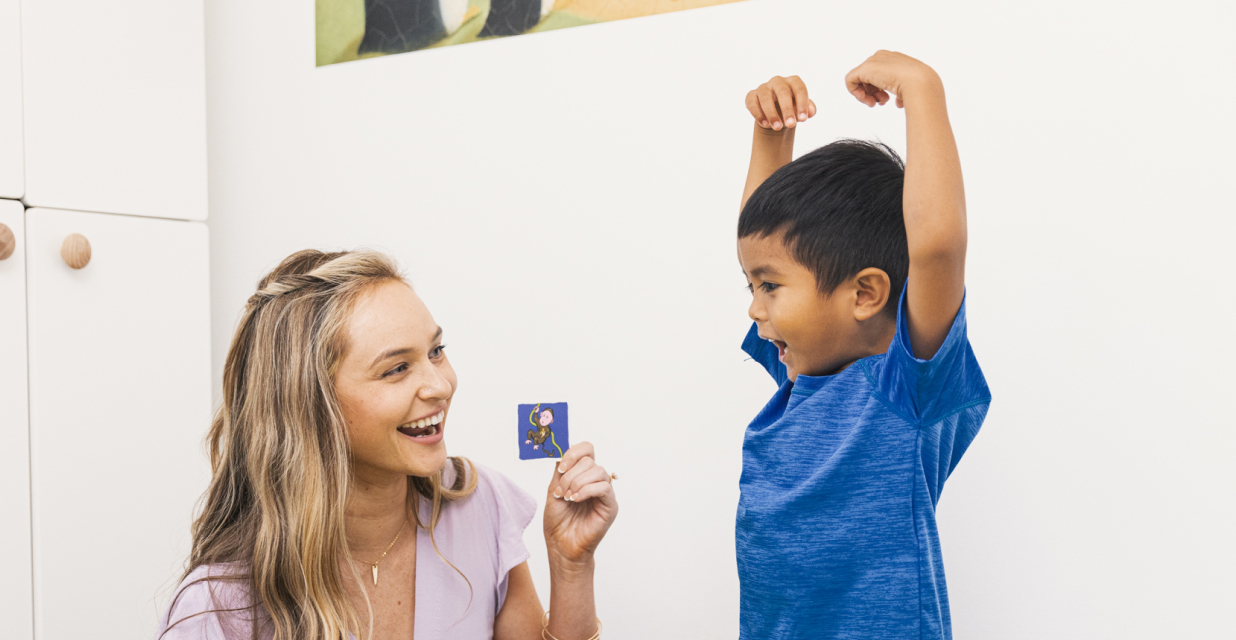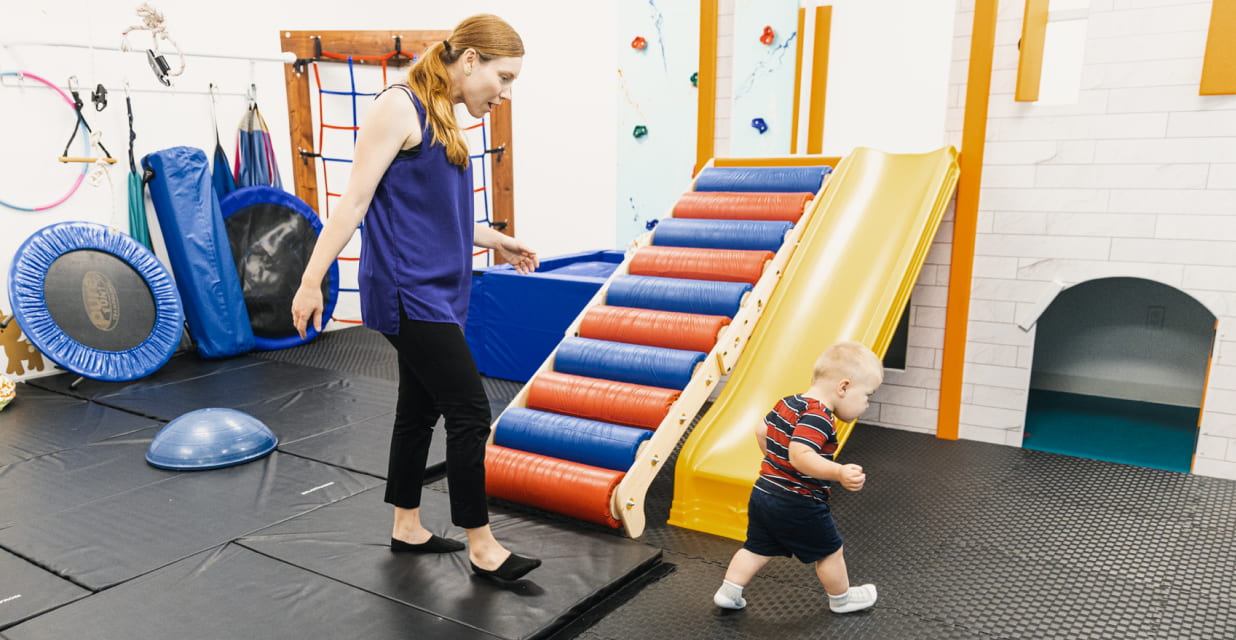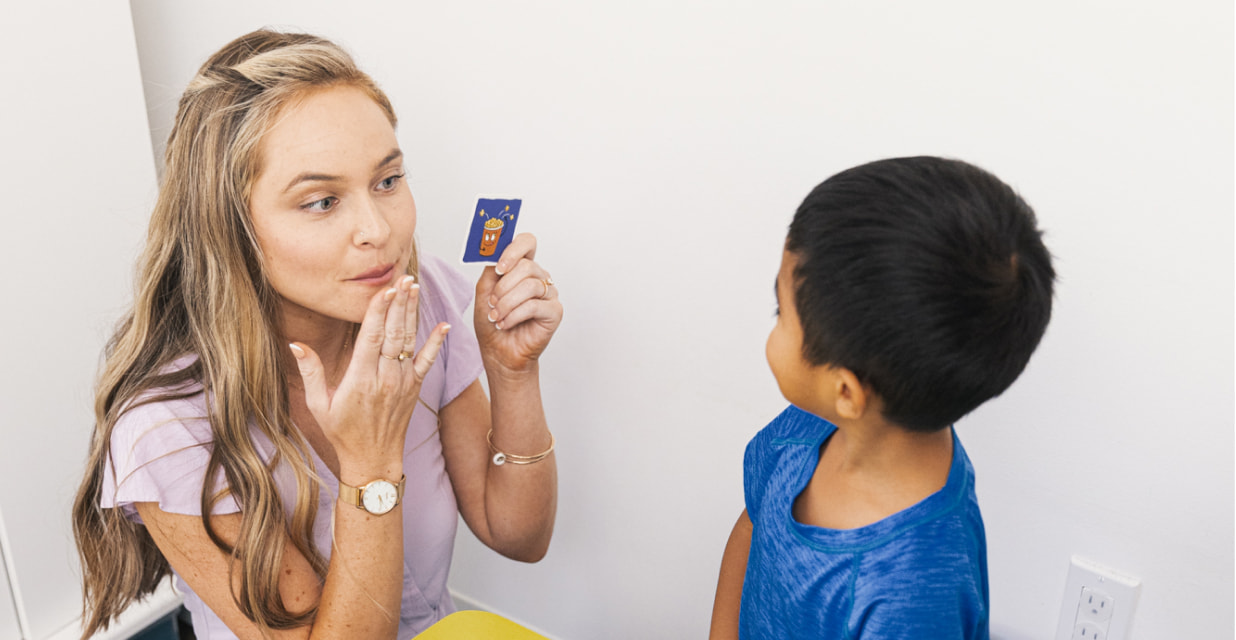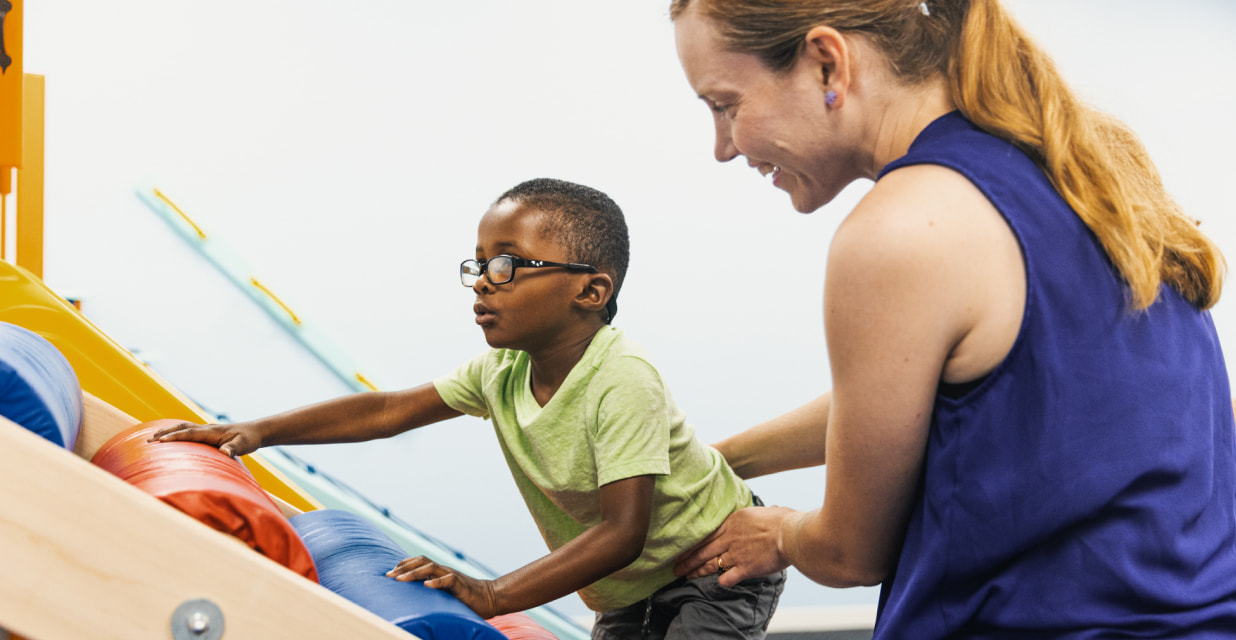How to Use Play to Help Children Learn and Grow
To the untrained eye, it may look like a speech therapist is just playing with your child. You might wonder when the actual learning is going to start with worksheets, flashcards or drills. But the reality is that children tend to learn more from play than through structured, adult directed activities.
Play can help to increase:
- social-emotional skills
- cognitive skills
- self-regulation
- language skills
It can promote:
- problem solving
- collaboration
- creativity
The mutual joy and shared connection during play can decrease stress and increase the bond between the people involved.
When I meet a child during their first speech session with me, it is my job to get to know that child, build rapport, and figure out the best way to help them meet their speech goals. If I were to make them sit at a table while I proceeded to lecture them and drill them for 25 minutes, some older children might do okay, but most younger children would probably either protest or not pay attention to me because I am not creating any active engagement. My top priority during my first few sessions with a child is to create trust and connection. Without that, it is difficult to teach anything. I do this by finding an activity that brings them joy: bubbles, tickles, cause/effect toys, pretend play, board games, etc.. Depending on the child’s age and abilities, there are certain activities I know that child will probably enjoy based on my experience. I start with those, and if they do not work, I try alternatives until I find something that creates joy and engagement. It is only then that I begin to integrate the child’s speech goals into the play to facilitate learning and growth. Let’s talk about the different types of play and how you can use them with your child at home to help expand their language skills.
Types of Play:
1. Physical/Rough and Tumble Play
Playing on the playground, tickle or wrestling games, pillow fights, lifting kids in the air, hanging them upside-down, using movement or dancing with music, etc.
I personally find this type of play especially effective with children who are difficult to engage (prefer to play alone doing their own thing) or who are sensory seekers (love climbing, jumping off things, crashing into pillows, etc.). I only do this with children who enjoy this type of play and pay attention to their body language that indicates whether they are giving me permission to tickle them or hang them upside-down. If a child is turning away or backing away in a non-playful manner, I stop, making sure to respect their boundaries to keep that aspect of trust. And of course, I always play these games as safely as possible.
Examples of using this type of play to facilitate language:
- Hold your hands out like you are about to tickle the child and wait for them to communicate they want you to proceed either through a gesture such as moving closer to you or a word or phrase such as “tickle” or “get me”.
- Incorporating music- singing a song where there is a part that you tickle them, squeeze them, hang them upside-down, etc. One I use while bouncing the child on my knees is “horsy, horsy, go to town. Better watch out or your horse will fall…… DOWN” then hang the child upside-down. You can wait for the child to say, “down” or gesture they want you to hang them upside down by leaning back.
- On the playground while pushing a child in a swing, you can hold the swing/child up so they are about to swing forward or backward (make sure the child is secure) and say, “ready…set…” and see if they can say “go” (or sign or gesture) to indicate they want you to let go.
2. Using Cause/Effect Toys
These toys are simple in that when you push a button, wind them up, etc. they do something fun. Some examples are wind-up toys, spinning tops, ball poppers, car ramps, bubbles, etc. These toys are great to capture a child’s attention and increase engagement. These kinds of toys work better to create engagement when the child needs you to help them operate it. For example, if they can’t wind up the wind-up toys on their own or they don’t know how to blow the bubbles. In this case, they will need to communicate with you every time they want you to activate the toy.
Examples of using this type of play to facilitate speech and language:
- Using “ready set….” and waiting for the child to say “go” for you to activate the toy, blow the bubbles, etc. If the child is not saying “go” you can model sign language or model a gesture, then wait for them to use it to communicate they want you to activate the toy.
- Model describing or action words: while popping bubbles say, “pop…pop” every time you pop a bubble. While the top is spinning say, “spin!”. Always use lots of excitement in your voice to increase attention and engagement.
3. Pretend Play
Pretend play can be done with toys such as people, animal figures/dolls, or vehicles becoming the “characters” in play or the child or adult themselves can be a character such as when playing dress up, playing school, restaurant, etc. Pretend play creates a safe container for children to explore different situations and emotions and is a great way to learn language. The first pretend play skills to develop in toddlers usually involve pretending to feed a doll or stuffed animal, or pretending to put them to sleep, or alternatively for the child to pretend to eat pretend food or pretend to sleep. They might also push a car or fly a plane while making sound effects. As they gain more vocabulary, they can make the characters talk and have conversations with each other and act out different situations.
Examples of using this type of play to facilitate speech and language:
- As a parent, while engaging in pretend play with your child, it is common to feel the need to ask your child a lot of questions. For example, “where are they going”, “what are they doing?”, “what color is that?”, etc. However, questions like this take the child out of the fun and magic they are creating with their pretend world into an interaction where their parent is quizzing or drilling them instead. It is much more beneficial for the child to have the parent join them in this pretend world by grabbing a toy and also pretending to be a character and interacting with that child’s character. Modeling language while engaging in pretend play is a great way to teach your child. For example, if you want to teach your child what to do when you go to someone’s house, you could do this using dolls and a doll house. Your character could knock on the door, and another character inside the house could say, “who is it?”, and the one outside could say, “it’s Billy”, and then your character inside could open the door and say, “hi! Come in!”. Even if your child is not talking yet, you can have your characters talk to their characters to model appropriate language for the situation.
- Children also LOVE to experiment with emotions within pretend play. It almost never fails that when I make my character fall down and cry, the child smiles and indicates they want me to do it again. Not because they like seeing people cry, but because I am showing them a safe way to play with difficult emotions such as sadness and anger. In real life, when a child is feeling those emotions, they are in a state of distress which shuts down the logical brain and makes learning pretty much impossible. By pretending to have characters outside of themselves feeling these emotions, they can play with the cause and effects of emotions, and as a parent you can model ways to deal with them. For example, when my character falls down and starts crying, I can have another character walk up to them and say, “are you okay?”, and pretend to help them or give them a hug. This helps with emotional regulation and using appropriate language for emotionally charged real life situations. These are just a couple examples of the things you can teach children through modeling within pretend play. The possibilities are as endless as your imagination!
4. Board Games/Structured Games
These are games that have a set of rules. It can be a physical game like a sport, or tag, or a board game that comes with a set of written instructions (note: you do not always have to play with a game according to the given instructions. You can always tailor these rules to accommodate your child’s abilities and things you want to teach them).
Examples of using this type of play to facilitate speech and language:
- If you want to teach your child cooperation, collaboration, and negotiation skills, you can come up with the rules of the game together. You can work on skills that these games address directly- such as working on describing skills with games like Guess Who or Headbands in which you must describe a person or noun so the other person can guess who or what you are describing. Or you can have the child practice a skill before they take a turn in the game (i.e., before you roll the dice, make a sentence about this picture or tell me the opposite of up).
- The type of play you choose to engage in with your child should depend on their age and interests. Watch your child when they play by themselves and see what they tend to gravitate towards and see if you can join them in a playful and fun way to help them learn and grow.
Side Note About Media and Electronic Toys:
Some TV shows, YouTube videos, and electronic toys market themselves as educational and lead parents to believe that if you put your child in front of the TV or hand them the toy and go do your own thing, they will learn something. But the reality is that no television show or fancy toy is a substitute for engagement with a real live person. Children learn best with adults who are present and give their full attention. Speech and Language skills are particularly all about communication, human interaction, and connection, which is best achieved through your presence.
Playing with your child will not only help them to learn and grow but will also increase your connection to your child and increase joy and decrease stress for both of you. So, find your inner child and have some fun together!!!
By Hilary Dickey, MS, CCC-SLP









